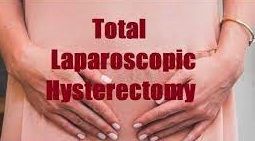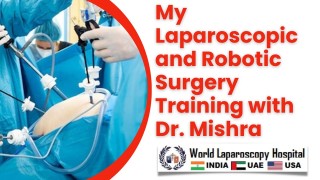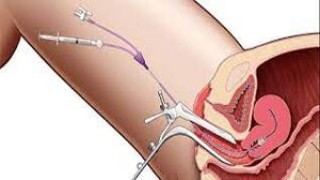Minimally invasive precision: Laparoscopic trocars and cannula
Add to
Share
1,505 views
Report
2 years ago
Description
Experience advanced surgical techniques with laparoscopic trocars and cannula, revolutionizing the realm of minimally invasive procedures. These innovative tools provide surgeons with enhanced surgical access and unparalleled precision. By using smaller incisions and inserting specialized instruments through these trocars and cannula, surgeons can navigate with utmost accuracy, minimizing tissue trauma and accelerating patient recovery. Embrace the future of surgery with laparoscopic trocars and cannula, paving the way for safer and more precise procedures. Discover the epitome of surgical excellence through laparoscopic trocars and cannula, the pinnacle of minimally invasive precision. These cutting-edge instruments offer surgeons unparalleled access to the surgical site with minimal incisions, reducing post-operative pain and scarring. By inserting specialized tools through these trocars and cannula, surgeons can manipulate tissues with utmost precision, ensuring meticulous procedures with reduced risk of complications. Embrace the transformative power of laparoscopic trocars and cannula, revolutionizing surgical practices and delivering improved outcomes for patients. Embark on a transformative journey into the realm of modern surgery, where the combination of laparoscopic trocars and cannula has revolutionized the concept of minimally invasive precision. These groundbreaking instruments have redefined the way surgeons access and navigate the complexities of the human body, paving the way for enhanced surgical procedures and improved patient outcomes. At the heart of this medical innovation lies the laparoscopic trocar, a slender tube-like instrument designed to create a secure entry point into the body. With its specialized sharp or blunt tip, the trocar facilitates the insertion of additional surgical instruments, such as cameras and dissectors, into the surgical field. By utilizing trocars, surgeons can minimize the size of incisions, reducing trauma to surrounding tissues and optimizing the healing process. Complementing the trocar is the indispensable cannula, a hollow tube that acts as a conduit for the passage of instruments and provides stability during the surgical procedure. Cannulas come in various sizes and designs, tailored to accommodate different surgical needs and anatomical considerations. These invaluable tools not only allow for precise instrument manipulation but also enable the insufflation of carbon dioxide gas, creating a clear operating space and enabling improved visualization. The marriage of laparoscopic trocars and cannula opens up a world of possibilities for surgeons, offering unmatched access to intricate surgical sites with minimal disruption to the patient's body. Through tiny incisions, surgeons can introduce a range of specialized instruments, including graspers, scissors, and electrocautery devices, enabling them to perform complex procedures with dexterity and precision. The benefits of laparoscopic trocars and cannula extend far beyond the operating room. By reducing the size of incisions, patients experience less post-operative pain, reduced scarring, and faster recovery times compared to traditional open surgery. Additionally, the minimized tissue trauma lowers the risk of complications such as infection and bleeding, promoting overall patient safety and well-being. These innovative tools have transformed numerous surgical specialties, including gynecology, urology, general surgery, and bariatric surgery. From minimally invasive hysterectomies and gallbladder removals to advanced prostate surgeries and gastric bypass procedures, laparoscopic trocars and cannula have become essential instruments in the surgeon's arsenal. As technology continues to advance, so too will the capabilities of laparoscopic trocars and cannula. Ongoing research and development aim to enhance their functionality, improve ergonomics, and expand their applications. Surgeons and medical professionals worldwide are embracing this paradigm shift, embracing the immense potential for precision, patient-centric care that these instruments provide. In summary, laparoscopic trocars and cannula have redefined the landscape of surgical precision by enabling minimally invasive procedures with unmatched accuracy. Through smaller incisions and precise instrument manipulation, surgeons can optimize patient outcomes while minimizing post-operative discomfort. These remarkable tools herald a new era in surgery, empowering healthcare professionals to deliver transformative care to patients around the globe. Step into the realm of cutting-edge surgical innovation and experience the unparalleled advantages offered by laparoscopic trocars and cannula. These remarkable instruments have revolutionized the field of minimally invasive surgery, providing surgeons with enhanced access, remarkable precision, and a multitude of benefits for patients. By utilizing laparoscopic trocars, surgeons can establish a secure and controlled entry point into the body through tiny incisions. These trocars, available in various sizes and designs, allow for the insertion of specialized instruments that facilitate intricate procedures. With their sharp or blunt tips, trocars navigate the anatomical landscape, ensuring minimal tissue trauma and reducing the risk of post-operative complications. Complementing the trocars, cannulas serve as instrumental conduits during laparoscopic procedures. These hollow tubes provide stability and create a pathway for the passage of instruments into the surgical site. Designed to accommodate various instruments and maintain pneumoperitoneum (the presence of carbon dioxide gas within the abdominal cavity), cannulas facilitate optimal visualization and precision, further enhancing surgical outcomes. The integration of laparoscopic trocars and cannula heralds a new era of surgical excellence. Through smaller incisions, patients experience less pain, reduced scarring, and faster recovery times compared to traditional open surgery. Additionally, the minimally invasive nature of these procedures lowers the risk of infection, bleeding, and other post-operative complications, promoting improved patient safety and satisfaction. The applications of laparoscopic trocars and cannula span a broad range of surgical specialties, including gynecology, urology, gastroenterology, and more. Surgeons employ these instruments for procedures such as cholecystectomy, appendectomy, hernia repair, hysterectomy, prostate surgery, and even complex bariatric surgeries. The versatility and precision offered by laparoscopic trocars and cannula have revolutionized surgical techniques, allowing for more precise interventions with superior patient outcomes. As technology advances, ongoing research and development efforts continuously improve laparoscopic trocars and cannula. Innovations focus on optimizing ergonomics, enhancing instrument maneuverability, and integrating advanced imaging technologies for even greater surgical precision. Surgeons and medical professionals around the world eagerly embrace these advancements, as they enable the delivery of safer, more effective, and patient-centric care. In summary, laparoscopic trocars and cannula represent a pinnacle of minimally invasive surgical precision. These instruments provide surgeons with unparalleled access and remarkable precision, while patients benefit from reduced pain, faster recovery, and improved outcomes. As the future unfolds, laparoscopic trocars and cannula will continue to shape the landscape of modern surgery, empowering medical professionals to redefine what is possible in the realm of minimally invasive procedures.
Similar Videos






